Veterans who helped China in the War of Resistance made the greatest invention after the "wheel"

Veterans who helped China in the War of Resistance made the greatest invention after the "wheel"
The first half of Jack Kilby's life was unremarkable.
Kilby was born in Missouri, USA, in 1923. He was an amateur radio enthusiast with mediocre grades. When he graduated from high school, he failed to enter the Massachusetts Institute of Technology by three points, which made him regretful throughout his life.
In 1941, not long after he enrolled at the University of Illinois, the Pearl Harbor attack broke out.
Kilby was recruited into the army and became a glorious radio communications engineer. He came to the China-Burma-India theater and was mainly responsible for radio maintenance work to ensure that Allied radio communications remained unobstructed.
As a signal corpsman, his footprints spanned almost half of China's central and western regions from Yunnan to Shaanxi, China, and contributed his own strength to the fight against Japanese invaders.
After World War II, Kilby returned to college to continue his studies in electrical engineering, with tuition paid by the military.
Kilby, who received a bachelor's degree in electrical engineering in 1947, received three offers and chose to work in the central laboratory of Globe Union.
In 1958, the 35-year-old Kilby jumped to Texas Instruments (TI), where a once-in-a-century opportunity presented itself. He would make the greatest invention in human history after the "wheel."
1
The predecessor of Texas Instruments was originally a spin-off company in the petroleum industry, mainly engaged in the collection of geological data and the processing of exploration data.
After the invention of the transistor, the company launched a pocket-sized transistor radio called the Regency TR-1, which sold for only $49.95 and sold 100,000 units in a year.
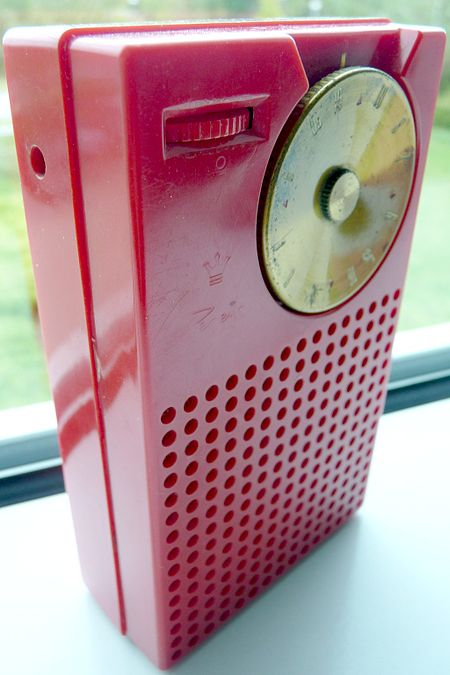 picture
picture
Having tasted the sweetness, Texas Instruments has since firmly embarked on the path of becoming a technology company.
The transistor was invented by Bell Labs to replace bulky and expensive vacuum tubes. It is made of semiconductors, is small and cheap, uses only one thousandth of the electricity of vacuum tubes, and generates very little heat.
However, electronic equipment requires the use of various components: crystals, resistors, capacitors, etc. These components vary in size and are very bulky. They are manufactured separately and then connected to each other. At the connection points, workers must weld manually. .
If one thing goes wrong, the entire device will not work. At the time, there was a proper term "Tyranny of numbers" to describe this problem.

The U.S. military came up with a trick called the "Micro-Module program". The method is very simple. It unifies the size and shape of each electronic component so that the connection process can be standardized.
Texas Instruments is part of this plan.
But Kilby, who had just joined Texas Instruments, felt that this method was not good and decided to find an alternative.
Dallas was very hot in July, and the summer of 1958 set a historical record. As a rule, companies required employees to take vacation in July to deal with the scorching heat.
But Kilby had just joined the company and didn't have enough vacation, so he could only stay in the office and continue to work.
Perhaps with no distractions, Kilby could think deeply and his creativity exploded.
In order to solve the interconnection problem, everyone's usual idea is to find the best (and most expensive) materials to make each component miniaturized.
Kilby thought: Why not make all the components from the same material (semiconductors) and make the whole thing smaller and cheaper?
The best resistors are made from materials like carbon, but silicon and germanium can also do the trick.
The best capacitors are made of ceramics, but again semiconductors.
Pure conductors like gold and silver are available in stores, but so are silicon and germanium.
And silicon is sand, there is endless supply on the earth, and the price is extremely cheap.
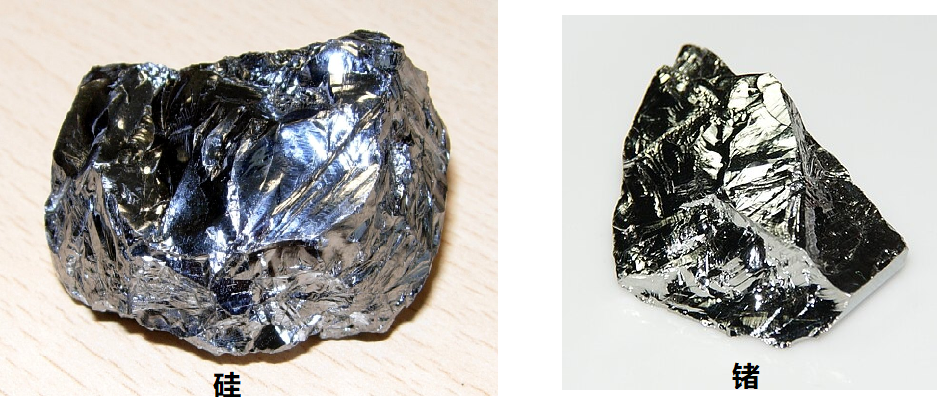 picture
picture
On July 24, 1958, as the puzzle gradually took shape, Kilby wrote in his notebook: A very small microcircuit composed of many devices can be produced on a wafer. Circuits consisting of resistors, capacitors, diodes and transistors can be integrated on a single chip.
While others focused on miniaturizing parts and optimizing performance, Kilby found a new path: integrating parts with average performance and designing circuits that could be manufactured on a large scale.
Just having a theory is not enough, you must also implement it.
When the leader came back from vacation, Kilby reported to the leader. The leader was dubious: Can you make something and take a look?
On September 12, 1958, Kilby really built something. This thing looked very rough, as if it was pieced together with germanium.
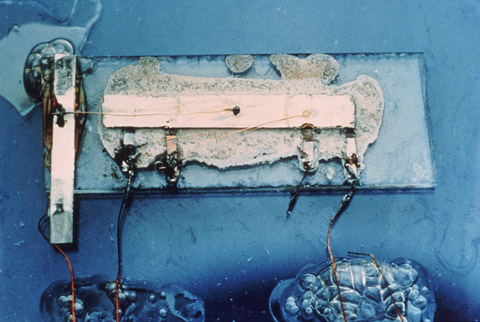
This image looks huge, but in fact, it's only this big:
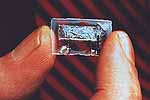
The function of the circuit is very simple, which is to generate a sine wave.
Kilby gave a presentation that was attended by several executives, including the chairman of Texas Instruments.
Kilby flipped the switch and an endless sine curve appeared on the oscilloscope screen.
The functions were simple and the equipment crude, but everyone realized: Kilby had made a major breakthrough.
This may be an epoch-making invention, the first integrated circuit in human history!
2
Texas Instruments quickly patented Kilby's invention and demonstrated it to the public.
Oddly enough, integrated circuits didn't make much of a splash.
There were even objections at the time:
"Integrated circuits don't take full advantage of material properties, and semiconductors are simply not the best resistive materials."
"Devices as good as transistors should not be mixed with devices in the same material."
What's more, many people in large companies believe: "Integrated circuits will make many circuit design engineers unemployed!"
How similar history is, just like the emergence of cars to replace horse-drawn carriages, the emergence of new things will always encounter great resistance.
When integrated circuits dominate the world, everyone will find that not only will there be no unemployment in those projects, but the demand will increase greatly, because the market will become a hundred or a thousand times larger than before.
On September 12, 1962, the President of the United States delivered a famous speech at Rice University in Houston: We choose to go to the Moon.
The plan was to send a man to the moon and return him safely in the 1960s.
This plan allowed NASA to release a huge amount of funds at once.
The guidance system, telemetry system, and infrared tracking of the lunar landing program all require a large amount of calculations, but the rocket load is limited, and each pound of load requires five pounds of propellant to support it.
The advantages of integrated circuits were immediately highlighted, and the U.S. government dominated the entire integrated circuit market.
By the time Armstrong took his first steps on the moon, the Apollo program had purchased more than 1 million integrated circuits. Large-scale purchases reduced the price from $32 to $8, and continued to decline. By 1971, the price was already low. to $1.20.
Integrated circuits replaced transistors and became the mainstream of the market.
In 1971, a company called DataPoint asked Intel to customize a microprocessor. At this time, Intel was quite "funny". It positioned itself as a storage business company because: each terminal can only have one processor, but it can There is unlimited memory.
Therefore, Intel does not want to take over this business. CEO Robert North said: The processor is a useless product. We can only do it if DataPoint funds the development and transfers the property rights to Intel.
DataPoint agreed to these terms, which is considered by the technology community to be the worst business decision ever.
The 8008 microprocessor designed by Intel opened up a $100 billion market and became the dominant player in this market.
The emergence of microprocessing began to bring computers to thousands of households.
3
After inventing the integrated circuit, Kilby did not stop there. He later invented the handheld calculator and the thermal printer.
 picture
picture
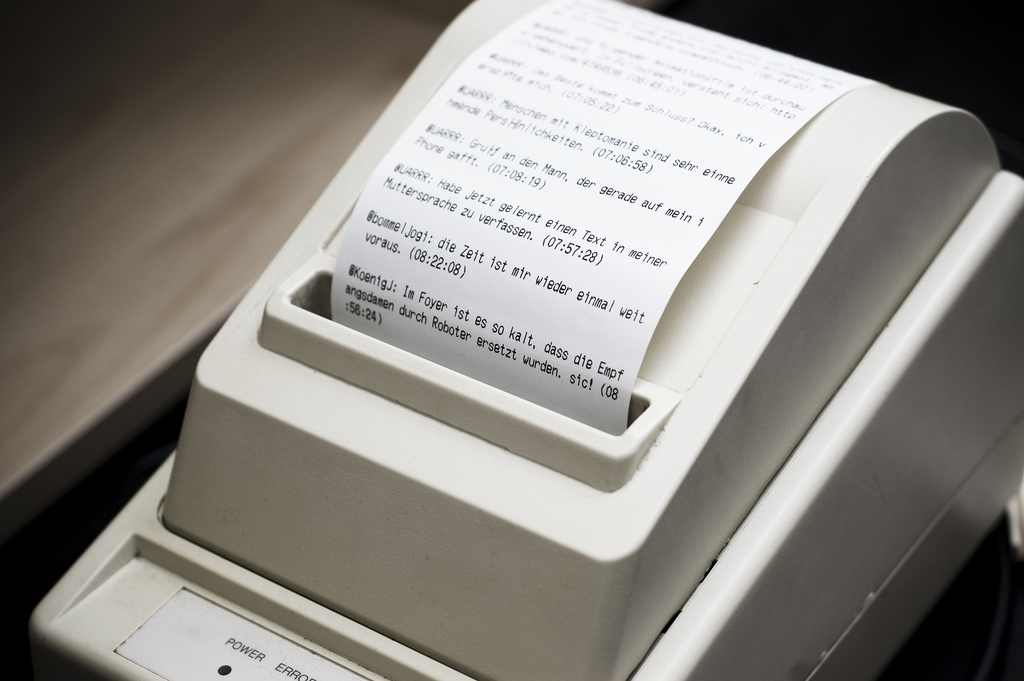 picture
picture
Kilby received numerous honors: the National Medal of Science, the National Medal of Technology, the National Academy of Engineering Medal, and the National Inventors Hall of Fame.
In 2000, 42 years after the advent of the integrated circuit, Kilby won the Nobel Prize in Physics for "laying the foundation for the information age."
Texas Instruments' integrated circuit design laboratory is also named after him: Kilby Labs.
Kilby died in 2005 at his home in Dallas, Texas, at the age of 81.
In this year, integrated circuits have developed from a simple chip into a huge industry with total sales of more than 400 billion US dollars.
As time goes by, integrated circuits have become more and more important. They can be found in computers, mobile phones, cars, refrigerators, washing machines, televisions, printers... everywhere.
The invention of the integrated circuit officially marks the entrance of human society into the era of "silicon civilization". Its emergence is no less than the industrial civilization of the steam engine.
Bardeen, one of the inventors of the transistor, even pointedly pointed out that the integrated circuit is the most important invention after the "wheel".
4
Finally, we must talk about the patent battle for integrated circuits.
When Kilby invented the integrated circuit, the Fairchild Company founded by the "Eight Traitors" was also conducting independent semiconductor research. Horney invented the important planar process, and Noyce also thought of using the same silicon wafer to make it. Various devices are connected using planar technology.
But Texas Instruments had already announced Kilby's invention. Noyce was shocked and felt that he had started too late.
He went to the patent office to check Kilby's patent application and found that it was flawed, especially the wires extending from both sides like spider legs. These flying wires lacked practical value and could not be mass-produced.

And our own plane technology can completely eliminate these flying lines:
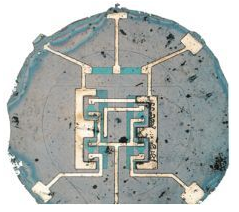
So Noyce patented his idea.
This sparked a decade-long lawsuit between Texas Instruments and Fairchild, which eventually resulted in a settlement and cross-licensing.
"Benefits" can "arrange seats and divide fruits", but "famous tools" are not easy to reconcile.
Who is the real first inventor?
Texas Instruments believes that what Noyce did was just to productize Kilby's invention, and it was not an "invention" at all.
In Fairchild's view, Kilby's invention had no practical value, was too crude to be seen, was like a "shitty", and could not be called an "integrated circuit" at all.
Even within Fairchild, the title of the first inventor is difficult to determine. Noyce's "idea" came from the plane processing process invented by Herney, and Rust turned this "idea" into Who is the person and inventor of the product?
In fact, all inventions and creations are inseparable from teamwork. If all the credit is recorded on one person, it will be unfair to the rest of the team. But giving credit to the collective and the failure of some people will dampen the enthusiasm of key people.
The so-called first inventor simply did the right thing at the right time and happened to be well-known to the public.
The main leaders of the world's first electronic computer ENIAC team were Eckert and Mauchly, but von Neumann wrote a report on the train, and Colonel Goldstein wrote " The words "Von Neumann Report" have made the name "Von Neumann Architecture" popular all over the world. How many people know Eckert and Mauchly?